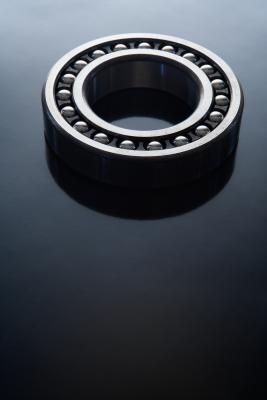
The hub and bearing assembly on vehicles serves a very important function. The hub, which rides on an axle shaft, contains inner and outer bearings that not only support the weight of the vehicle but also allows the wheel to spin smoothly. The inner and outer bearings ride on tapered races. Each bearing must have adequate lubrication grease to perform its job. Bearings can wear inside the hub, due to moisture and rust, metal fragments and prolonged wear that comes with age. Vehicle owners can repair their bearing hub assemblies using some basic tools.
Set the vehicle transmission in park or neutral. Apply the emergency brake. Raise the hood and disconnect the negative battery cable with a socket and wrench. Use a tire wrench to loosen the lug nuts on both front wheels, only enough to break them free. Raise the vehicle with a floor jack and place two jack stands under the front frame. Finish removing the lug nuts with the tire wrench and pull the wheels off.
Place a flat-head screwdriver between the dust cap and hub seam and pry off the dust cap. Locate the long caliper bolts that hold the brake caliper to the caliper bridge frame. Remove the bolts with a socket. Disconnect the ABS wire on the caliper, if equipped with such. Pull the caliper up and off of the rotor. Wrap the caliper to the frame with a bungee cord so it does not hang and put stress on the brake line.
Use a socket to loosen and remove the bolts holding the caliper bridge frame. Pull the frame off. Use wire cutters to snip the end of the cotter pin attached to the castellated nut inside the hub. Pull the cotter pin out. Use a large end wrench to turn the castellated nut counterclockwise until it comes off the axle shaft. Pull out the spacer and the outer bearing.
Take a firm hold of the hub assembly and pull it toward you, while twisting it from side to side. Use a socket to remove the bolts if the hub has a flange attachment. If there is a thin metal plate under the flange, keep it for reassembly. Place the hub, with the outside end facing up, across two small blocks of wood.
Place a round flat punch through the hub hole until it contacts the end of the bearing seal. Tap the seal out using a hammer. Retrieve the inner bearings from underneath the hub. You can now fit new bearings in the old hub, or change the old hub for a new one.